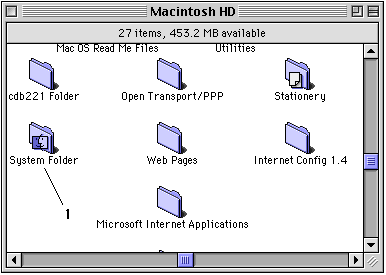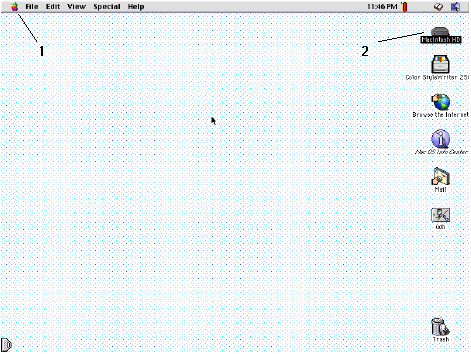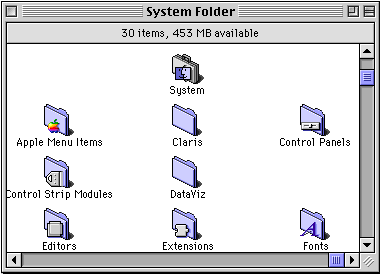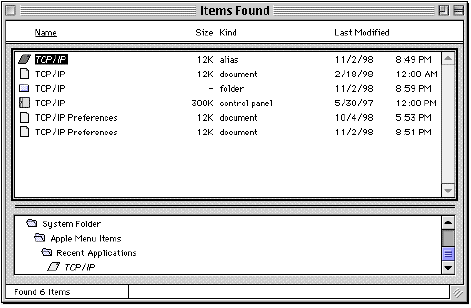

The picture of the desktop is provided for support people who have never seen what a screen of a Macintosh looks like. The Macintosh uses a simple graphical interface.
There a two basic items that are essential to helping a customer. The first important item is labeled 1. This is called the Apple Menu. In this pull down menu you will find a item called Control Panels. Most TCP/IP type settings will be found in a control panel.
Label 2 is pointing to the Hard Drive for the computer. This is very similar to the C: drive on Windows/DOS machines. Typically it is called "Macintosh HD" but it can be renamed to anything else.

This is a picture of what you might see when you open the hard drive. One folder that you should take notice of is the System Folder. The System Folder is similar to the Windows directory in Windows 95 or the winnt directory in Windows NT. It holds all of the files need to run the Macintosh and to add extra functionality to it.

As you can see there is also a Control Panels icon in the System Folder. The Control Panel in the System Folder and the one in the Apple Menu are the same, giving you an alternative to accessing the Control Panels.
Many times you will not find things where you expect them to be. Find File will help you locate files. The Find File command is in the File menu when the user is on the desktop.

Just type in the name of the file you are looking for. Click on Find and in a couple of seconds you will get this window.

Actual windows may vary on older systems.
One important thing to remember when troubleshooting a Macintosh is that it works like Windows 95. If the web browser is giving an error about no DNS entry but the user is able to connect it is very likely that the user has no DNS settings or the wrong DNS settings. If the user says he/she keeps getting a line is busy error it probably is because of a wrong phone number. Check the phone number that is being dialed.
MacTCP (older, System 7.0 to 7.5.3) or TCP/IP (newer, System 7.5.3 to 8.1) will be where the users DNS settings will be. These two control panels also dictate what PPP dialer is going to be used. There are three common PPP dialers: PPP, FreePPP Setup, and ConfigPPP. Username/password, phone numbers, and most modem information will be found in the PPP dialer.